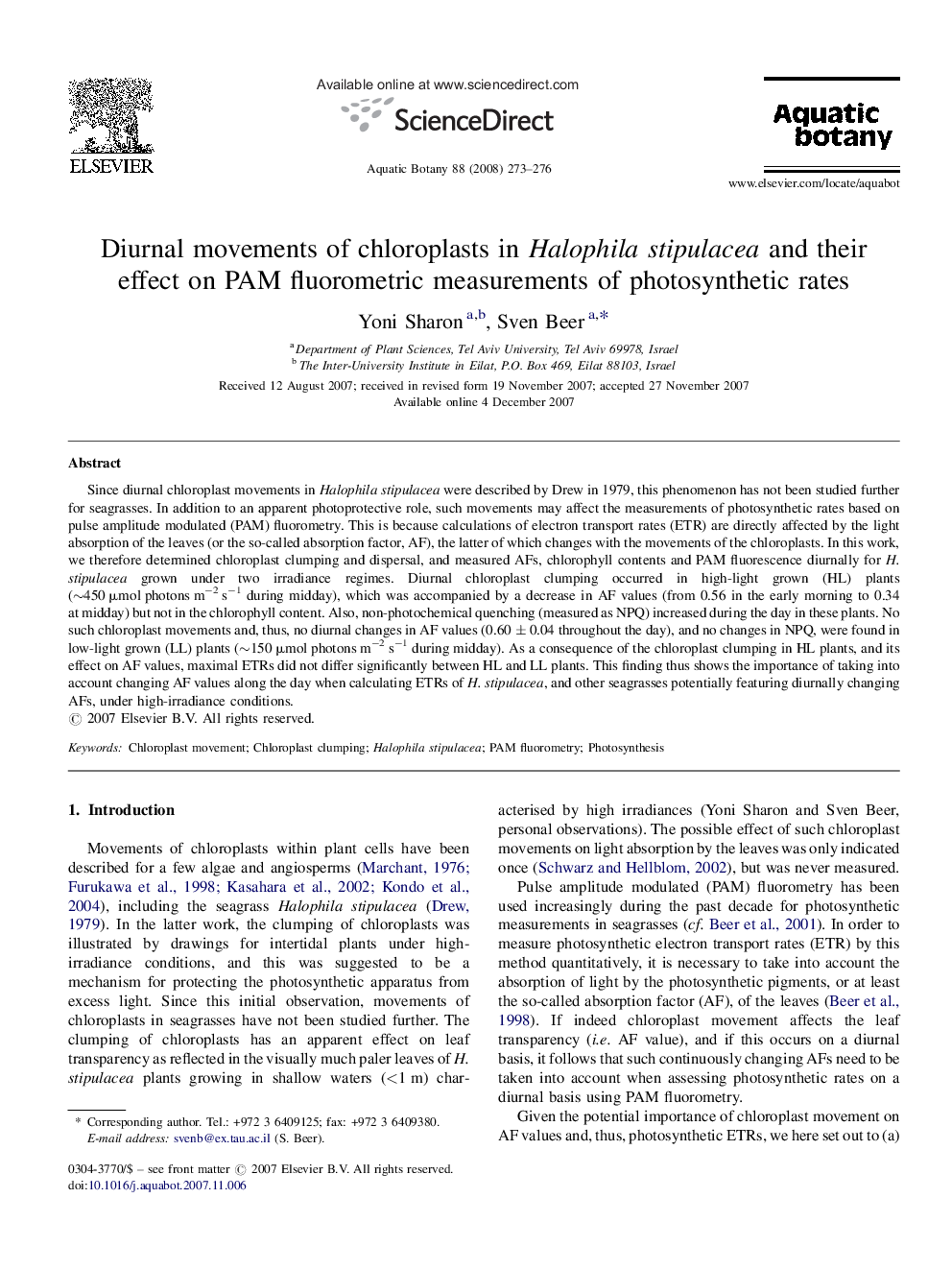| Article ID | Journal | Published Year | Pages | File Type |
|---|---|---|---|---|
| 4528492 | Aquatic Botany | 2008 | 4 Pages |
Since diurnal chloroplast movements in Halophila stipulacea were described by Drew in 1979, this phenomenon has not been studied further for seagrasses. In addition to an apparent photoprotective role, such movements may affect the measurements of photosynthetic rates based on pulse amplitude modulated (PAM) fluorometry. This is because calculations of electron transport rates (ETR) are directly affected by the light absorption of the leaves (or the so-called absorption factor, AF), the latter of which changes with the movements of the chloroplasts. In this work, we therefore determined chloroplast clumping and dispersal, and measured AFs, chlorophyll contents and PAM fluorescence diurnally for H. stipulacea grown under two irradiance regimes. Diurnal chloroplast clumping occurred in high-light grown (HL) plants (∼450 μmol photons m−2 s−1 during midday), which was accompanied by a decrease in AF values (from 0.56 in the early morning to 0.34 at midday) but not in the chlorophyll content. Also, non-photochemical quenching (measured as NPQ) increased during the day in these plants. No such chloroplast movements and, thus, no diurnal changes in AF values (0.60 ± 0.04 throughout the day), and no changes in NPQ, were found in low-light grown (LL) plants (∼150 μmol photons m−2 s−1 during midday). As a consequence of the chloroplast clumping in HL plants, and its effect on AF values, maximal ETRs did not differ significantly between HL and LL plants. This finding thus shows the importance of taking into account changing AF values along the day when calculating ETRs of H. stipulacea, and other seagrasses potentially featuring diurnally changing AFs, under high-irradiance conditions.
